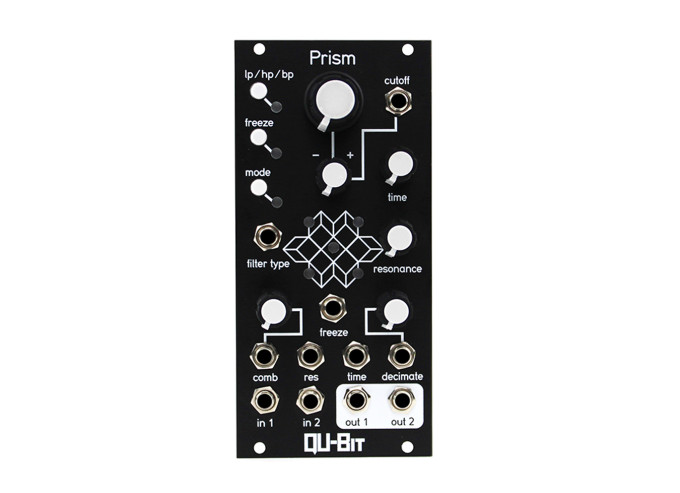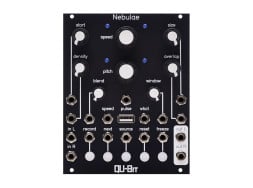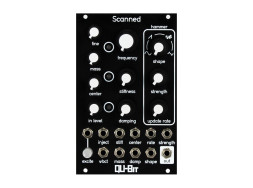Qu-Bit ElectronixPrism Multidimensional DSP
-
 Free
Free
Shipping -
 No Hassle
No Hassle
Returns -
 Extended
Extended
Warranty -
 Low Prices
Low Prices
Guaranteed
Qu-Bit Electronix Prism
Prism is, as Qu-Bit says, a fully stereo multidimensional signal processor module. What this means is that the incoming audio signal can be sent to three distinct effect processors in various combinations depending on the user-specifiable internal routing. At the core of the module is a freezable audio buffer, which is shared by the rest of the processors. The length of the buffer is controllable via the 'time' parameter. Experimenting with freezing the buffer and modulating its size yields plenty of beautiful glitchy mayhem. On the X-axis of the Prism is a comb filter, designed with generously long delay time. On the Y-axis, there is a parameter labeled decimate, responsible for both bit depth and sample rate reduction of the signal. To sweeten things up even further, on the Z-axis you'll find a state variable filter with three voltage selectable types. All filter types—LP, HP, and BP share the same control knobs for frequency and resonance. Prism promises to be an excellent tool for radical audio mangling while retaining controlability and musicality.
Prism Features
- Three buffer-based effects in one module
- Stereo I/O
- Eurorack module
- Width: 12hp
- Depth: 22mm
- Current Draw: 90mA @ +12v, 10mA @ -12v
 Best Eurorack Filters + Effects of 2019Multi-Peak Filters, Resynthesis, and BeyondNAMM 2019 CoverageOur Favorite New Gear for the New YearQu-Bit Aurora: A Stereo Spectral Reverb ModuleThe Long-Awaited Eurorack Reverb is Finally Coming
Best Eurorack Filters + Effects of 2019Multi-Peak Filters, Resynthesis, and BeyondNAMM 2019 CoverageOur Favorite New Gear for the New YearQu-Bit Aurora: A Stereo Spectral Reverb ModuleThe Long-Awaited Eurorack Reverb is Finally ComingThe Prism is an interesting combination of time based effects that can produce comb filtering and delay effects, there is also a multi-mode filter and decimator effect. The order and routing of these effects can be changed and the delay can be frozen giving many different effect options from this one module. The Prism is also stereo!
We used two Verbos modules for an envelope and VCA/Filter, The Control Voltage Processor and Amplitude & Tone Controller.
This stereo audio buffer can be navigated through on 3 axes, each of which provides a different sonic journey through its array of time based controls.
The X and Z planes are home to a flexible delay line capable of long clocked delays, slapback echo, or comb filtered vocoder-esque timbres. On the Y axis is the decimate control. This sets the audio fidelity of the buffer by manipulating the sample rate and bit depth of the output. A state variable filter with configurable low pass, high pass, and band pass outputs can be enabled at the beginning or end of the signal chain providing yet another dimension of spectral transformation. And thanks to its digital architecture, the current buffer contents can be locked in place with the Freeze control, creating glitch and beat repeat effects which can be synced to an external clock source.
The Prism blurs the lines between DSP effect, filter, and looper and transcends into a new realm of uncharted audio processing.






Welcome Back!
Not a member yet?
You're in!
Join the Club!
As a member, get...
You're in the Club!